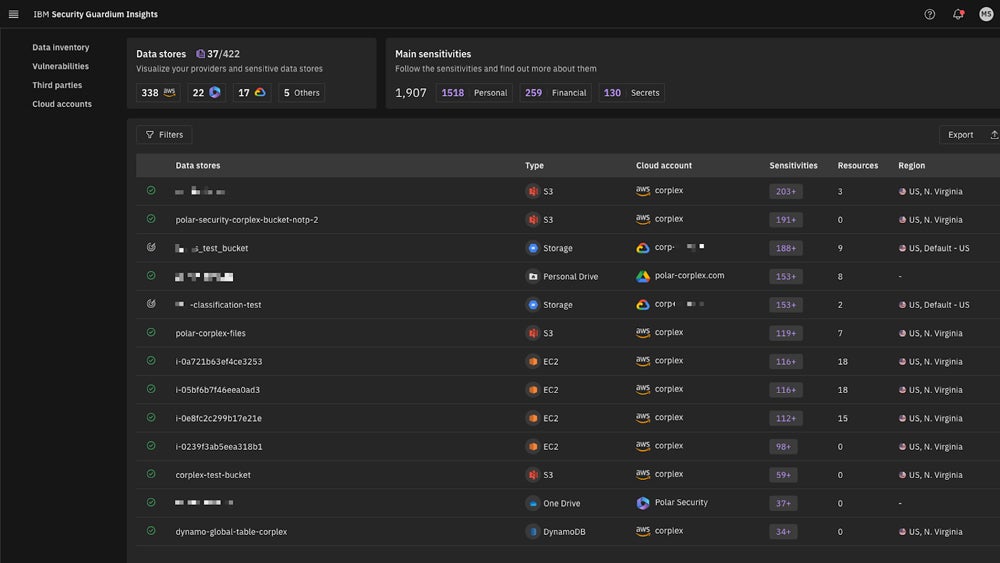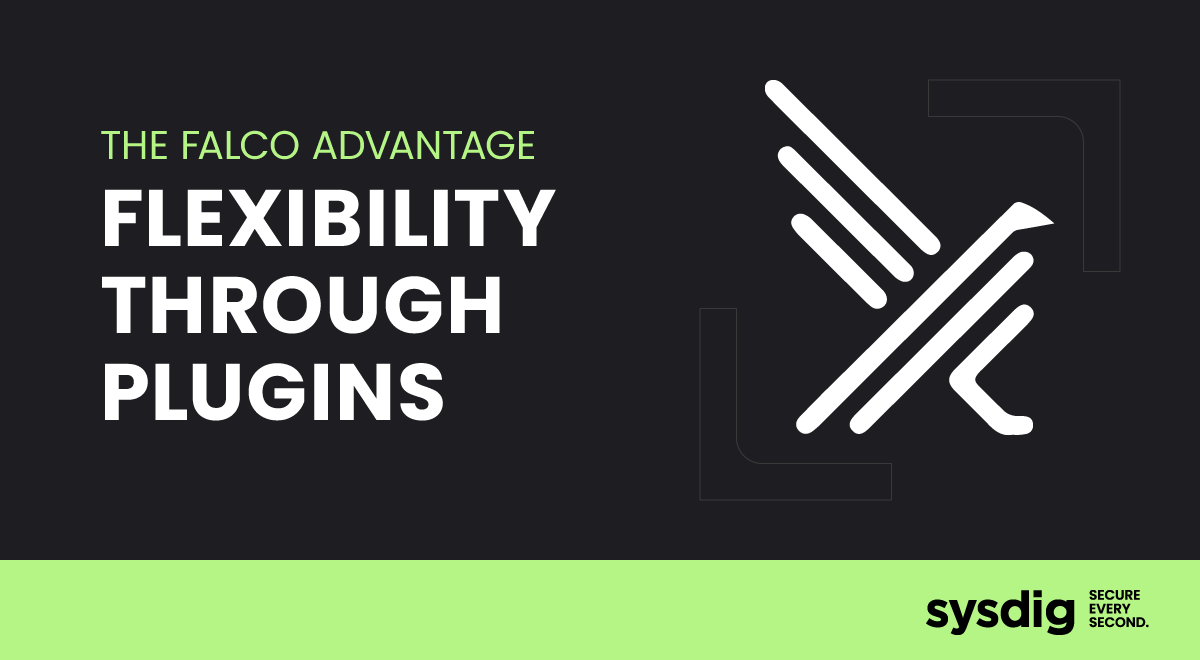Cloud database security refers to the set of techniques and procedures used to shield cloud-based storage from malicious or unintentional attacks. It safeguards data by authenticating users and devices, controlling access to data and resources, and following regulatory requirements. This security approach protects against common threats like data breaches, DDoS assaults, viruses, hackers, and unauthorized access in cloud environments.
How Cloud Database Security Works
Cloud database security often entails identifying sensitive data, setting policies, utilizing encryption, installing access restrictions, auditing, monitoring logs, and more, but this may vary depending on the company’s resources. It’s a shared responsibility of the company (network, DBA, security, apps, compliance, and infrastructure teams) and its cloud provider, and it requires regular evaluations and adjustments.
Here’s an overview of how cloud database security works and who are typically responsible for implementing these methods:
| Step | Responsible Role | Execution |
|---|---|---|
| 1. Identify any sensitive data in the database. | • Database administrator (DBA) • Security team • Compliance team |
• Create sensitive information inventory. • Utilize data classification frameworks. • Use database schema diagrams and flowcharts. • Deploy data discovery tools. |
| 2. Create and implement database security policies and processes. | • Security team • Compliance team • Legal • Staff |
• Document and align policies with company goals. • Utilize policy templates and industry regulations. • Maximize collaborative platforms. |
| 3. Establish encrypted connections for data transmission. | • Network team • Security team • Infrastructure team |
• Employ secure communication protocols (HTTPS and SSL/TLS). • Use certificates. • Consult the encryption guidelines. |
| 4. Set access controls. | • Security team • DBA • Infrastructure team |
• Manage access control lists and policies. • Use access control frameworks. • Apply RBAC models. • Implement IAM systems. |
| 5. Perform database auditing. | • DBA • Security team |
• Configure the audit logs. • Apply log management tools. • Define procedures for log review and investigation. |
| 6. Monitor the database activity logs. | • Security team • Incident response team |
• Install log analysis tools. • Define the baseline patterns. • Engage security personnel in log review. |
| 7. Check for SQL injections and other vulnerabilities. | • Security team • Apps team • Penetration testers |
• Deploy vulnerability scanning tools and pentesting frameworks. • Follow the secure coding principles. |
| 8. Plan for backups and restoration. | • DBA • Infrastructure Team |
• Setup backup and recovery software. • Define the backup frequency. • Evaluate the recovery techniques. |
| 9. Develop disaster recovery and incident response plans. | • Security team • DBA • Infrastructure team • Incident Response Team |
• Build disaster recovery templates. • Set communication channels. • Test plans through exercises. |
| 10. Schedule periodic security inspections and updates. | • Security team • Compliance team |
• Determine the assessment. • Update the procedures. • Maintain cloud security practices. |
For a thorough approach to cloud database security, you should have a deeper grasp of its functions, types, benefits, and threats in order to make informed decisions. Recognizing common dangers also aids in risk reduction through applying best practices and using appropriate cloud tools. By employing a holistic, secure cloud database practice, you maximize the benefits of cloud computing for your organization.
Who Should Use Cloud Database Security?
Cloud database security is not just a preventative measure; it’s a strategic investment for enterprises. Any organization that handles sensitive data should employ cloud security practices to avoid data breaches and the associated costs of legal fees, system repair, victim compensation, and noncompliance fines.
- Companies that value data protection: Prioritizing the application of cloud database security practices guarantees that sensitive information is protected from unauthorized data access and breaches.
- Businesses wanting to enhance customer trust: Securing your cloud database improves customer trust by displaying your commitment to cloud data security, boosting your reputation, and promoting customer loyalty.
- Corporations enhancing operational continuity: By preventing disruptions, a secure cloud database protects revenue streams and maintains smooth corporate operations, even in the face of potential cyber threats.
- Organizations adhering to regulatory requirements: Implementing cloud database security enables you to effectively comply with regulations and avoid penalties and legal liability associated with data breaches.
- Firms wanting to reduce financial risks: Preventing the costs of breach recovery, including potential ransomware payments, can save your company a substantial amount of money and resources.
4 Types of Cloud Database Security
Each type of cloud database security — network security, access management, threat protection, and information protection — ensures data confidentiality, integrity, and availability. These types are layered security that work together to create a fully secure architecture that reduces risks and secures sensitive data in cloud settings from attacks and vulnerabilities.
Network Security
Network security is the first layer of protection in cloud databases that employs firewalls to prevent unwanted access. Firewalls help you comply with cloud data security policies by regulating incoming and outgoing traffic using software, hardware, or cloud technologies. By implementing strong network security measures, you can avoid breaches and illegal data access, ensuring the confidentiality and integrity of your cloud data.
Access Management
Another type of cloud database security is access management, which guarantees that only authorized users have access to sensitive data in the cloud. Authentication validates user identities, while authorization allows particular data access based on preset roles and permissions. It reduces the danger of data breaches by limiting information access to just authorized workers, improving data security and compliance with privacy requirements.
Threat Protection
Threat protection involves taking proactive measures to detect, assess, and respond to any threats to the cloud database. Use auditing tools to monitor and analyze database activities for anomalies, sending managers real-time notifications about suspicious activity or potential breaches. The ongoing monitoring maintains compliance with security requirements and allows for timely responses to mitigate threats and maintain data integrity.
Information Security
This security layer focuses on safeguarding data stored in a cloud database. Encryption techniques turn sensitive data into unreadable formats, guaranteeing that even if it’s intercepted, unauthorized people cannot access it. Additionally, it uses regular backups and disaster recovery strategies to assure data availability in the event of deletion, corruption, or cyber-attacks.
Cloud Database Security Benefits
Cloud database security provides a comprehensive set of benefits that solve key database concerns such as data protection, accessibility, and resilience. It also promotes agile corporate growth and innovation by delivering scalable, secure, and dependable data management solutions. By leveraging the following advantages, you can improve operational efficiency, bolster security posture, and better manage data assets:
- Scalability: Adjusts database size and performance to accommodate changing business requirements without incurring costly upgrades or disruptions.
- Increased visibility: Enables better monitoring of internal operations, data locations, user actions, and access kinds.
- Efficient native apps integration: Allows developers to create efficient native applications that use cloud-stored data, resulting in faster app deployment processes.
- Secure data encryption: Uses advanced encryption algorithms to maintain safe data in transit, in storage, and while sharing.
- Convenient access: Encourages flexibility and collaboration across distant teams, resulting in smooth data exchange and collaboration without jeopardizing security.
- Reliable disaster recovery: Includes safe backups maintained on external servers, allowing enterprises to quickly restore data and continue operations.
Cloud Database Security Threats
Despite its benefits, cloud databases are vulnerable to dangers such as API flaws, data breaches, data leaking, DoS attacks, malware, and unauthorized access. These dangers, inherent in modern systems, threaten data security, potentially causing serious damage. Fortunately, there are ways to mitigate these threats.
API Vulnerabilities
Insecure APIs can be used by attackers to obtain unauthorized access to the database. API design or implementation flaws, such as insufficient authentication or incorrect input validation, can be used to modify data or access sensitive information.
To avoid API vulnerabilities, use strong authentication methods such as OAuth or API keys, encrypt data in transit, update APIs on a regular basis, and monitor usage trends to detect unwanted access attempts quickly.
Data Breaches
Unauthorized access to sensitive information can result in theft, corruption, or exposure. It can happen through exploiting weaknesses in databases, apps, or compromised credentials. To mitigate the threat, encrypt sensitive data, implement rigorous access rules, and monitor database access logs. Conduct frequent security audits to detect and remediate issues in advance.
Data Leakage
Data leaking occurs as a result of sensitive data being exposed outside of the organization’s network, either accidentally or on purpose. This is generally caused by insecure settings, careless personnel practices, or insider threats.
Reduce data leakage by implementing strong data governance principles. Then, deploy data loss prevention solutions, encrypt critical data, and provide frequent security training to prevent accidental or intentional data exposure.
Denial-of-Service (DoS) Attacks
DoS attacks attempt to interrupt database systems by flooding them with malicious traffic, rendering them unreachable to normal users. It causes downtime and loss of service. To prevent DoS attacks, implement network security measures such as firewalls and intrusion detection systems (IDS). Apply rate restriction and traffic filtering, use content delivery networks (CDNs) for traffic distribution, and monitor network traffic for unusual activities.
Malware Distribution via Cloud Services
Attackers exploit cloud synchronization services or compromised accounts to spread malware across multiple devices and platforms. Malware uploaded to cloud storage results in widespread infection and compromise.
To prevent malware transmission via cloud synchronization, use strong endpoint security, impose strict cloud service rules, educate staff about phishing dangers, and keep antivirus software up to date.
Unauthorized Access
Unauthorized access happens when malicious actors obtain access to a database via stealing credentials, exploiting flaws in authentication mechanisms, or circumventing access rules. Implement strong access restrictions and authentication techniques like MFA and RBAC, review and update user permissions on a regular basis, monitor database access logs, and perform security audits and penetration testing to quickly eliminate unauthorized access threats.
A cloud security posture management tool can help you discover and manage cloud environment threats. Read our in-depth guide on CSPM, covering how it works and the best available solutions in the market.
Best Practices for Cloud Database Security
Securing cloud databases requires the use of strong access controls, data encryption, updated database software, zero trust security approach, and more. By incorporating these best practices into your approach, you can effectively minimize the risks associated with unauthorized access, data breaches, and other security threats, assuring the security of sensitive data contained in your cloud environment.
Implement Strong Access Controls & Authentication Mechanisms
Strong access controls are implemented using multi-factor authentication (MFA) and role-based access controls (RBAC). To reduce the danger of unauthorized access, review and modify your access rights on a regular basis, following least privilege principles.
Encrypt Sensitive Data at Rest & in Transit
Utilize strong encryption techniques, such as AES-256, to secure data at rest and in transit. Implementing secure key management procedures safeguard encryption keys while guaranteeing data confidentiality. It guards sensitive information from unauthorized access while also ensuring compliance with data protection standards.
Utilize Firewalls & Network Security Tools
Use firewalls to monitor and filter both incoming and outgoing network traffic, which improves security by blocking unauthorized access attempts. Implement intrusion detection and prevention systems (IDS/IPS) to increase defenses by identifying and stopping hostile activity in real time. This layered method efficiently protects networks and sensitive data against cyber attacks.
Keep Your Database Software Updated
To maintain security, apply patches and upgrades supplied by your database provider on a regular basis. Monitor vulnerability reports and security advisories to make sure that you address reported flaws as soon as possible. Doing this strengthens database protections against possible exploits. It also ensures that your database infrastructure is resilient and secure against new threats and vulnerabilities.
Regularly Back Up Your Data
You should plan automated backups on a regular basis and guarantee redundancy in several locations or cloud regions. Periodically test backup restoration procedures to maintain data integrity and availability in the event of data loss or corruption. With this approach, you can support the continuity of operations and enhance the defenses of your cloud management systems against any disruptions.
Monitor & Audit Database Activities
Implement logging and auditing methods to monitor user activity, data changes, and system events. Use complementary cloud technologies to automate and monitor logs, detect suspicious activity in real time, generate alerts, and respond quickly to any security issues. Improve your overall security posture by allowing for quick detection and mitigation of threats in your environment.
Encourage Company-Wide Security Awareness
Train your employees about data protection policies, phishing awareness, and incident response protocols. Utilize cybersecurity training programs to easily manage your workforce’s security campaigns and user education. Conduct phishing simulations to test people’s response and cover strong password policies and protection in your training guides. Also, provide a dedicated space for conversations about security to encourage long-term security behaviors.
Adopt a Zero Trust Security Model
Use zero trust solutions and follow zero trust’s principles: “All entities are untrusted by default; least privilege access is enforced; and comprehensive security monitoring is implemented.” Regardless of origin or resource, verify each access request with continuous authentication and authorization checks. To avoid unwanted access and data breaches, use micro-segmentation and stringent access controls based on dynamic risk assessments and behavioral analysis.
Use Distinct Set of Credentials
Restrict the scope of permissions granted to each organization to reduce the impact of a compromised account or fraudulent activity. It’s particularly crucial when the application code is prone to vulnerabilities such as SQL injection. By isolating authentication accounts, you can reduce the risks of unwanted access and data breaches.
Best Cloud Database Security Tools
Oracle Data Safe, IBM Guardium, and Imperva Data Security are three of the top cloud database security tools available in the market today. Remember that when choosing a cloud database service, you must analyze potential provider’s security procedures, licenses, and compliance to check if they meet your security requirements. This due diligence guarantees that the chosen services meet your cloud protection and regulatory compliance criteria.
Oracle Data Safe
Oracle Data Safe is designed specifically for Oracle databases. It includes advanced security features such as alert policies, least privilege enforcement, and compliance reporting. It has an agentless operation, ensuring that data is not captured by software agents. Oracle Data Safe is suited for teams that utilize Oracle Cloud Infrastructure (OCI). Price starts at $50 per month for over 500 target databases, with a 30-day free trial available.


IBM Guardium
IBM Guardium is a robust platform for enterprise database security, providing data backup, encryption, and threat detection. It provides both agent and agentless data connections, making it ideal for larger businesses. It comes with a 30-day free trial for Guardium Insights and a 90-day trial for Key Lifecycle Manager. IBM doesn’t list direct pricing details, but Guardium Insights provides a convenient cost calculator.


Imperva Cloud Data Security
Imperva Cloud Data Security offers a hybrid data security platform and cloud database protection as a service designed specifically for AWS DBaaS. They offer 24/7 phone and email support, making it suitable for smaller teams who require ongoing assistance. Imperva’s pay-as-you-go pricing on AWS includes a free tier of up to 5 million requests per month and a base plan of $10,000 per year for up to 50 million monthly events.

Frequently Asked Questions (FAQs)
How Is Data Encrypted in the Cloud Database?
Data in cloud databases is encrypted using strong algorithms such as AES-256, which ensures data security during transmission and storage. Encryption occurs automatically upon data entry, making it unreadable to unauthorized parties. Network forensic tools improve security by checking encryption integrity, adding a layer of protection against potential breaches, and preserving data secrecy throughout its lifecycle.
What Are the Key Features of Cloud Database Security Solutions?
Top cloud database security solutions typically offer customer-managed keys, automated password management, comprehensive logging, and encrypted database access.
- Customer-managed keys: Gives you more control over access management by minimizing dependency on cloud providers.
- Automated password management: Grants temporary passwords and permissions to approved users, improving security in huge businesses.
- Comprehensive logging: Monitors and responds quickly to illegal access attempts, with consolidated records for convenient security event management.
- Encrypted database access: Protects sensitive data from illegal dissemination and ensures secure access without the need for decryption keys.
How Are Cloud Databases Deployed?
Cloud databases run on cloud virtual machines (VMs) that have database software installed. Alternatively, under platform-as-a-service (PaaS), cloud companies provide completely managed services. These models provide scalability and managerial flexibility, allowing them to accommodate a wide range of organizational needs and operational efficiencies.
Bottom Line: Secure Your Cloud Databases Now
While fundamental cloud database security practices provide essential protection, they’re just a part of a layered security defense. Integrate these practices with advanced security tools to improve threat detection and response skills. Human expertise further enhances these tools by interpreting alerts, researching issues, and applying additional security measures. This combined strategy increases overall defense and protects your sensitive cloud.
Integrate your cloud database security practices with security information and event management to automate your cloud security events analysis. Read our full review of the top SIEM tools, including their key features, pros, cons, and more.
